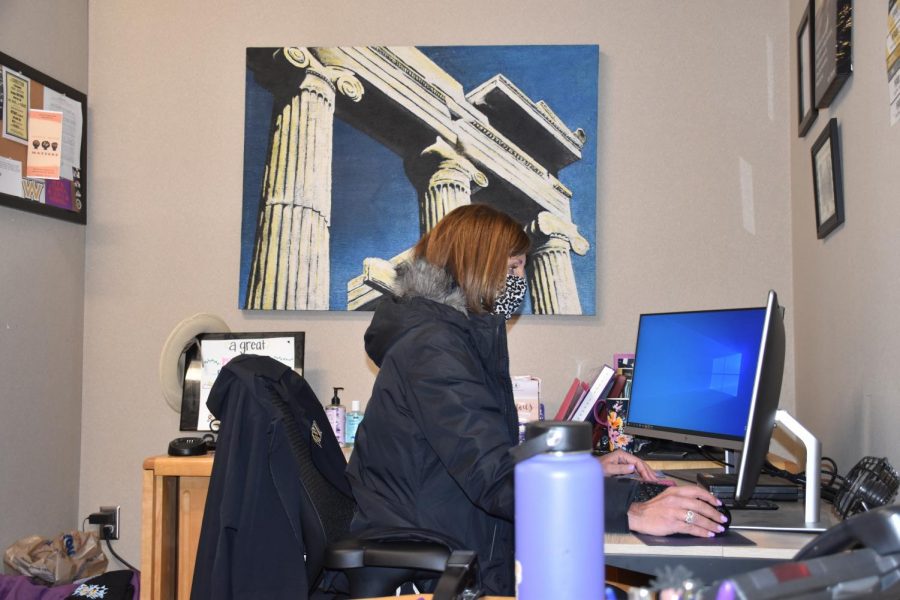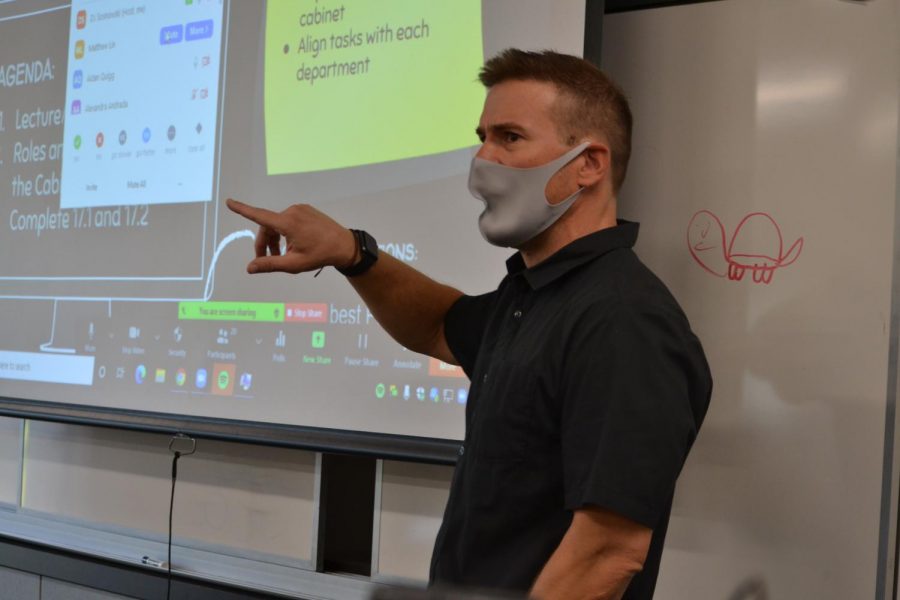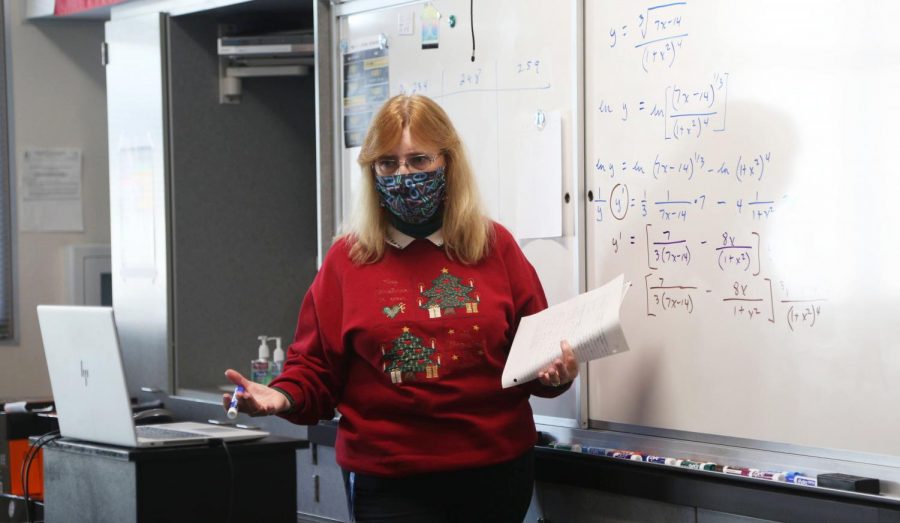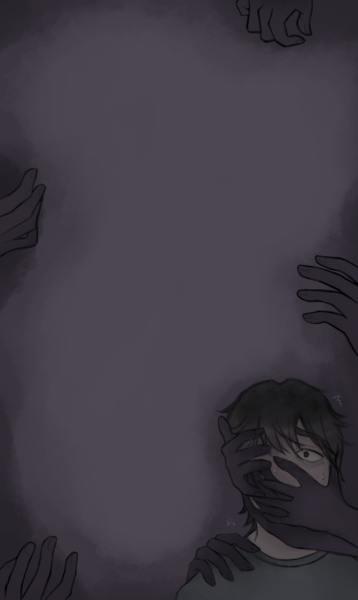One year off campus: Principal Ziegler reflects on the past year
One year ago today, all PUSD students were sent home in response to the COVID-19 pandemic. A year later, Principal Tina Ziegler reflects on the journey through handling school from home.
Below are the full transcripts and audio recordings of YJ Si’s interview with Principal Ziegler.

Ziegler: I was thinking about that just the other day, as we’re really gearing up and planning for reopening. And I remember when I was saying goodbye to some of the students—there was some fear, a lot of the students were like, “Yes, we get a vacation!” And some of the students were fearful. And I remember, we had a principal meeting at 8:39 in the morning at the district office where the superintendent was sharing with us the news. In the meantime, San Diego Unified already said they were going to close down. So the point was that we would get the information to our staff before they heard it in the news. And that didn’t happen. So there was a lot of uncertainty. What does this mean? Nobody’s been in a pandemic before. And I originally thought, “Okay, I’m gonna see everybody in three weeks.” And so, to have it this long, it’s been an adventure.
Ziegler: I think it hit me, probably, as we got more information about COVID-19, probably closer to May, because we were gearing up to plan the graduation, and we have all this information, well, maybe we can have it, maybe we can’t. And then maybe in July, we can have it and maybe we can’t and then the different numbers came up. And I remember, for graduation, we had about five different plans. And it was really difficult to try to plan something meaningful for our students. And it’s been that way, the whole, all along, I’ve had five different ways to reopen school, and in August, in January, and now in March, we have a plan. And so now, at least we have a plan. And I’m actually looking forward to seeing more of our students on campus.
Ziegler: Well, my heart goes out to the seniors this year. Last year, my heart went out to the seniors, they didn’t get their graduation that they wanted, the prom and many of the senior activities, and then our juniors [this year’s seniors], they haven’t had any of the senior activities like the harbor cruise at the beginning of the year or getting into college, what did that look like? That must have been so stressful for them as what counts and what doesn’t. So we are actually planning again, five different ways of how we can do graduation and some senior activities of bringing students on campus. So with the tiers, we just have to pay really close attention to that, as what happens as a gathering. How can we do it safely? What are all the guidelines? Because we have to follow the guidelines. There’s some people out there that said, “Oh, there’s other schools that are doing this,” and they might be a private school or, you know, we really do have to follow the guidelines. So as far as next year, a lot of people are asking, Are we going to be in a cohort? Are we going to be virtual? What are the options? I know that our district is going to offer more virtual classes, because for some students, they actually like, you know, virtual learning. But I think it’s too early to tell which one of the plans that we’ve been developing is going to be in place.

Ziegler: I think—not surprising. But I’m learning a lot about how different people react to the situation or anything that’s very serious. And I have to remember that as a leader. So some people are so anxious about it. And rightly so, that they are stuck, you know, and they’re not the person that they want to be. And then summer, some people are, “Everything’s fine.” And and they’re acting almost, you know, everything’s good, everything’s great. So it wasn’t surprising to me. But I’ve learned a lot about how to care for different type of staff and students and families to make sure that they feel comfortable when they work on this campus. So it’s not surprising, but I, it’s just apparent every single day.
YJ: What do you feel is the most important thing that you’ve learned about that [caring for different staff and students]?
Ziegler: Yeah, I think I’ve always been a person, as a principal, making sure that students feel connected to school. And that’s the most important thing, whether whatever activity they belong to, and that, you know, high schools, especially our social, their social, and if you get connected, then you do better in school. And so it’s been hard for some of us to find how those connections, how can we make the connections happen? In some teachers have learned some unique ways to do it through Zoom. But there are some students that feel very isolated. And that, that, I want to find a way that we can help those students I think about our ninth graders that don’t know anybody in the classes, and then how are they making those connections, so that it’s not just the learning that takes place in the classroom, it’s the whole experience of high school. And I don’t think it’s about what they’ve missed. Because I think our students, you have learned a lot of things during this pandemic. You’re living history, you know, this pandemic, the social injustice, you know, that’s going on as well. And I think you’ll grow from it. But right now, I think it’s very difficult to be a high school student.
YJ: Yeah, it almost just forces us to be alone all the time. And normally, in high school, we don’t have to be alone with our thoughts all the time. But especially now, I can’t even imagine what it would be like to be a freshman like going into high school, and not getting to really meet anybody on the first day or even at all.
Ziegler: I like what you said, you’re in your thoughts a lot. And I think that’s what happens. Some days, you know, I’ve been at school every day since April. So I missed yesterday, because I got my second [COVID-19] vaccine. But some Mondays I get up and I’m like, wow, this is like Groundhog Day, when we weren’t making progress towards anything, you know, like, “Okay, what can we do to make this better?” I’m always trying to work with ASB and the admin team and counselors, what can we do to increase the typical high school spirit?
YJ: Yeah, it seems like there’s barely any variation to these days now, because you don’t have those like little conversations, or for students, you don’t get to bump into people in into the halls or say hi, just have that little small talk that makes high school high school.
Ziegler: And you make new friends, right? You make new friends by being in a classroom, maybe you have people that you’ve never met before. And they go well, you make friends with them. You work on a project or you’re in a club with somebody new. And it’s about relationships.

Ziegler: To be honest, when I first heard about the concurrent-simultaneous model, I thought “That isn’t the greatest pedagogy,” meaning, the way to teach, right? And then I thought about equity. And I thought, “how do we do it for students that aren’t going to be able to come on campus that want to stay virtual, and then the students that are here?” And I realized, it was the only way to make it equitable for everybody. And if a student has to be quarantined or teacher is feeling fine, and has to be quarantined, it is really the only way to keep things moving, and not shutting down a school. So at first, I think I, along with everybody else was trying to decide what does this look like. And then a few of our teachers have tried it out, and I would observe them. And I thought, “Oh, it’s not that bad.” But I think for our students who are going to come on campus, and think that it’s going to be just like it was when they left, I think it’s going to be hard. I’ve had a slow introduction to this. So at first, it was just me and a few other the assistant principals that were on site, like nobody else, you know, and then we started getting the counselors, and then we started getting some teachers. And then we have three classes. So it’s been gradual, but I think it might be a shock for our students coming back that you are going to have to wear masks all the time, you are six feet apart. Most classrooms are going to have anywhere from three students to maximum 16. It’s averaging about eight students per classroom, if they all come. And knowing that they’re still going to be on a zoom, you know, especially if their teacher’s not there, their teachers teaching virtually, they’re definitely going to be in a classroom with other students, but on their device, so that will be interesting. It’s going to be another change, isn’t it?
YJ: Do you have anything to say to students who are going back to campus in terms of those expectations?
Ziegler: I do. We are going to be putting out a video, another video, it’s not going to be as strong because our newscast doesn’t have time to do it in time, you know, our student newscast that does such a great job. So we are going to be doing it. But we are actually going to, I think visuals are important to show what it really looks like. And what I’d say to students is to give it a chance. You know, try the first day, try the first two weeks. If it’s really not for you, you can go virtual, but I’d give it a chance, don’t make up your decision on the first day. Because like I said, when we first started having students come back and small numbers, it was still a little bit eerie. They weren’t talking to each other. It wasn’t, you know, everybody, even at lunch, everybody’s on their cell phone and on their device. And then just last week, last, last Tuesday or Wednesday, I saw more smiles, I saw, you know, you know, it’s more of the students, there’s going to be students that want the lunch tables, and there was more interaction, safely. And so it made me feel better that “Okay, just give it some time.” And don’t make a just snap decision on the first day. Let’s see how it works. I think for teachers too, it’s going to take a while to make adjustments.

YJ: What point in time did it hit you that we were actually going to reopen?
Ziegler: January didn’t look too good to me, because that was when all our numbers were going up. And I’m like, “Oh, sheesh.” I believe probably early February. When we we meet as principals, I meet with the high school principals once a week and then our superintendent also meets with us. And she—our superintendent—it’s always been a goal to get students somehow back on campus safely. And when we were going to reopen, we thought we were going to reopen and then she found out well, it had to be a whole grade level. I think we talked about this a whole grade level that had to we didn’t match that. And then there were several superintendents across the state that were going to put an appeal and once she found out that could open up when she shared that with us. I thought, “Okay, this could happen.” And I was thinking about March. So I, you know, it’s just the first beginnings, I wasn’t gonna say anything. I don’t like to get people excited and then, or not excited or more anxious. But as the plans came in place, yeah, probably February, we really started buckling down and looking at all the little, you know, we thought we had it in place, but it’s been real nice to just really fine tune the details.

YJ: Once we do go back, what does the rest of the year look like?
Ziegler: Well, my hope is that once we go back, we’re having the concurrent model, I think, like I said, the first two weeks, we’re all going to be adjusting. And then I’m hoping, remember, I believe in high school experience. And hopefully, we can start doing some type of activities, especially for seniors on campus, the sports have completely, you know, they’re opening up, and they’ve put in an appeal, and they’re opening up, what comes along with that is still up in the air is regarding testing for the high contact sports. But I think there’ll be more spirit in place as students start becoming more involved in their activities. And we also want to ensure that our virtual learners are also feeling connected. And so that’s going to be important to me as well, is to make sure that our virtual clubs, I know that our robotics has a virtual team and the students that come on campus, you know that we continue to involve everybody that’s going to be really important, these next couple of months.
YJ: Is there any way we’re looking at doing that right now? Trying to get that connection between virtual students?
Ziegler: Well, I’ve wondered if there’s a way, you know, at first, like the concurrent model, but I’m wondering if there’s ways that as we get better with technology that we bring in our virtual learners to the campus more, and making sure that our clubs—there’s still 70 active clubs, that are happening—that students can still feel comfortable joining. And, you know, we’re having a food drive, pretty soon, how can people get involved in that? So there’s always opportunities, but I think like you said, you’re alone in your own thoughts. And we get caught up in that. How do we make sure that we’re continuing to reach out to our virtual learners as well? That will be important.

Ziegler: I think for some content areas, it’s here to stay. I think that there have been some great tools that our humanities teachers are using that I would hope that they would continue with some of those activities and lessons that they’re doing virtually. Something like for our physical education, I’m hoping to get back in class, right in our hands-on [classes] like our principles of engineering. They’ve been doing a great job virtually. But, you know, that’s the part that I don’t think is meant to Zoom—our choir or band. I think it depends on the content. But I think there are some tools that have been really helpful for, you know, we live in a virtual world, and I think it will help our students that are going to college, knowing and even in the trades, a lot of things we’ve had to adapt virtually. And they’ll have those skills.
Ziegler: Oh, yeah, cleared my calendar for sure. We’re going to be outside. I know that it’s hard with masks to be able to tell if you’re smiling, but you can tell. [We’ll be] greeting students, greeting our freshmen, going in between classes, making sure, you know, our freshmen it’s the first time they’ve been on campus. So we’ve invited some members of the Link crew, you know, with the flags to kind of say, Okay, here’s the buildings, you know, that you go to. It’s like we’re reopening school. Not just reopening, it’s opening a grand new school year in a way because there’s so many things we’ve had to plan for. And I was talking to my husband last night. It’s not just because he goes, “why are you working so late” to get you know, I worked out to midnight, you’re just trying to do all these plans. And it’s also reimagining school, the way it was. So it’s not just let’s reopen, we have to think of everything. And so for sure, it will be the first day Monday, and then it will also be a first day Tuesday for those students that are going to be cohorts. ASB is going to be out there I have, we’ve purchased maybe a few little things to pass out to kids and to staff. That will be a surprise.
YJ: Yeah, I always forget that. Like, we keep talking about it. But freshmen haven’t actually experienced what it was like to be on the campus. There’s something about walking in on the first day and like, seeing all these people like cheering for you. You feel kind of awkward walking through.
Ziegler: Oh, yeah. That’s one of my favorite days. Yeah. Some people are so shy, that’s happening and in the gym. Well, we can’t do that. So that’s not gonna happen. But yeah, it’s hard opening it, we, you know, that whole big pep rally and all that. That’s the high school spirit—activities that I hope we can be more creative, especially starting next year, being in the next year and saying, How can we do things differently? You know, but still experience that spirit?
YJ: Do we know what next year looks like at all?
Ziegler: Yeah. Right. Because you’re going to be [a senior], you know, what, again, having the different plans—it’s really going to depend on if they stick with the regulations and still stay at six feet apart. Because that prohibits us from having everybody here that wants to come here safely. So are we still going to be an A/B model? I’m not sure. You know, with the masks, maybe it will be a certain area? What type of activities can we have? I believe that since the sports are starting to open up, and if those things start going well, we are going to be able to show that we can do this in a safe manner. So and more people are getting vaccinated. So hopefully that works.
Ziegler: I hope that in the end, when we look back on this year that we see some of the things we’ve learned, you know, and made us better and made us stronger. Right now. It’s too soon, I think because we’re in it. And we often think about the things we’ve missed instead of the things we’ve gained. So my final thoughts are if you know, looking in to this coming year and looking into the next couple of months, I think we continue to have that attitude of “Yes, be thoughtful of those around you, be safe,” and so that we can get back to not normal, but you know, activities that we miss, and that we can do safely. So I’m very excited to see more students on campus. I think a lot of us are. There’s some anxiousness among everybody, I understand that. And we’re planning for it to go well.










![Jolie Baylon (12), Stella Phelan (12), Danica Reed (11), and Julianne Diaz (11) [left to right] stunt with clinic participants at halftime, Sept. 5. Sixty elementary- and middle-schoolers performed.](https://wvnexus.org/wp-content/uploads/2025/09/IMG_1948-400x600.png)